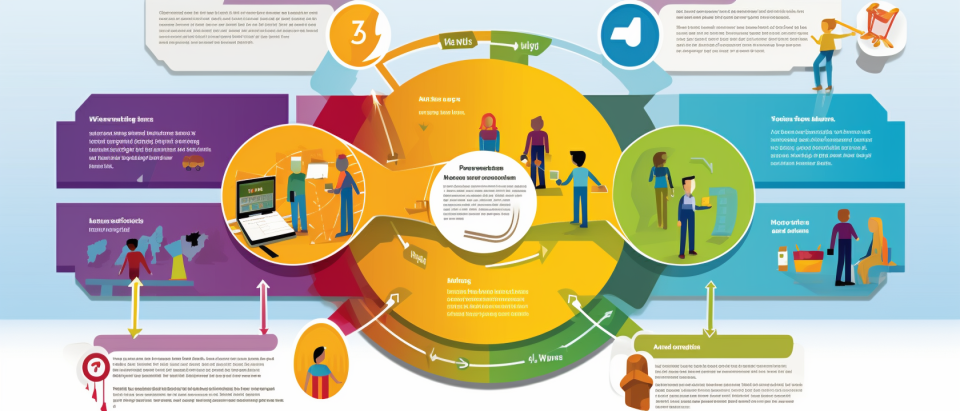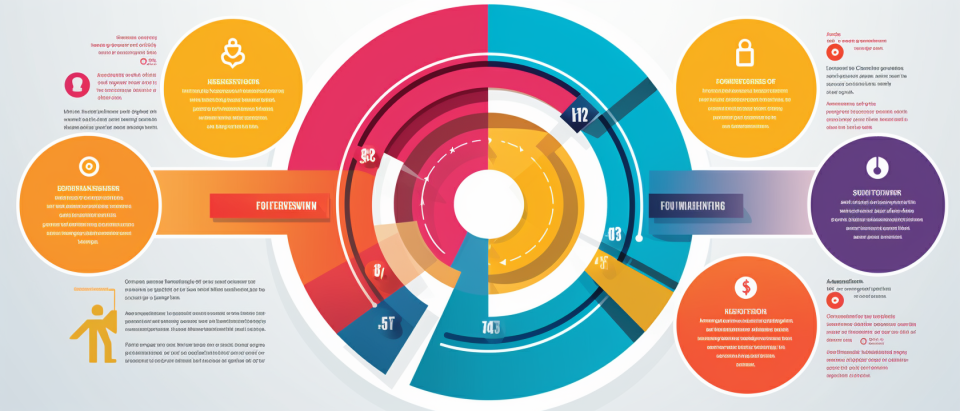Key Takeaways
✅ Deep Understanding of Customer Needs: Engaging deeply with key accounts through Customer Needs Analysis is the bedrock of effective KAM, allowing companies to deliver highly customized solutions that align with client expectations and foster enduring relationships.
✅ Strategic Account Development: The Account Planning process is vital in transforming insights into actionable strategies, putting forth clear objectives and KPIs, which steer the key account towards mutually beneficial outcomes and measurable growth.
✅ Ongoing Engagement and Optimization: Regular Key Account Reviews are crucial for keeping strategies on track and dynamically responding to the evolving landscape of customer needs, ensuring the relationship adapts to change and continues to thrive.

Introduction
Have you ever wondered why some businesses thrive building robust and lasting relationships with their clients while others struggle to keep their doors open? The secret may lie in mastering the art of Key Account Management (KAM).
Essential for any organization keen on driving sales and nurturing profitability, KAM is the strategic blueprint to unlocking the full potential of your most lucrative customer partnerships. In the bustling world of business-to-business (B2B) interactions, knowing how to manage and grow significant client relationships can set you apart.
If you're ready to elevate your company's customer engagement to stellar heights, dive into the world of KAM with us! Discover the five transformative account management processes that can catapult your key clients from mere transactions to engines of growth and success.
Customer Needs Analysis
Customer Needs Analysis is an essential step in providing optimal service to clients. To achieve this, it's crucial to understand their business context, including their business model, market position, and competitive landscape. Identifying their pain points allows for a tailored response, addressing specific concerns or inefficiencies they face. Analyzing their buying patterns provides insight into how and why customers make purchasing decisions, facilitating a more personalized service and product offering. Developing tailored approaches by leveraging the collected data enhances customer satisfaction and loyalty.
In-depth knowledge of customer requirements is key to building strong relationships. Understanding their business context and identifying their pain points are the first steps in this process. Analyzing their buying patterns allows for the development of tailored approaches, which leads to enhanced customer satisfaction and loyalty. By focusing on these aspects, businesses can forge robust, mutually beneficial partnerships that are built on a solid foundation of understanding and addressing customer needs.

Account Planning
Account planning is a structured approach to managing key customer relationships, beginning with the setting of clear goals. These objectives should be both short-term and long-term, and closely aligned with the customer's aspirations to ensure mutual benefit. Once the goals are established, it's essential to devise action plans that outline the concrete steps needed to achieve these objectives. Each action should be strategically sound and executable, forming a roadmap for success.
Measuring success is a critical aspect of account planning, requiring the definition of Key Performance Indicators (KPIs) that will accurately track the progress and impact of the account strategy. Regular review and adaptation of the account plan are also vital, as this ensures its continued relevance in the face of any changes in the customer's business or market dynamics. By maintaining a flexible and responsive approach, account managers can keep their strategies aligned with their clients' evolving needs and goals.

Capacity Planning and Resource Allocation
Capacity planning and resource allocation are essential components in executing an account plan effectively. It starts with an assessment of capabilities, where a company evaluates whether its current resources are sufficient to meet the demands of the account plan. This includes analyzing both human and technological assets to ensure they align with the strategic goals set for the key account.
To ensure a consistent and personalized service, dedicated support is crucial, with specific team members assigned to focus solely on the key account. Additionally, investing in development through targeted training equips the sales team with the necessary knowledge and skills to serve the key account effectively. The technological integration of tools and platforms streamlines sales processes and enhances customer interactions, contributing to the overall success of the account plan.

Key Account Review
Reward and Recognition
Reward and recognition are vital in maintaining a motivated sales team and aligning their efforts with key account objectives. Implementing incentive programs that are in sync with account goals ensures that the sales team's efforts are directly contributing to the desired outcomes. Additionally, setting up acknowledgment mechanisms to celebrate milestones and achievements in key account management fosters a sense of accomplishment and encourages continued high performance.
Maintaining motivation through rewards is essential for driving the sales team to persist in their efforts and strive for excellence. Cultivating a culture of recognition not only enhances staff loyalty but also reinforces their dedication to the company's vision and the success of the customer. This positive reinforcement creates an environment where team members feel valued and motivated to contribute to the overall success of the key account.

AI Marketing Engineers Recommendation
These processes are essential for nurturing the client-company relationship and driving sustainable business growth.
1. Account Identification and Selection:
Before any effective account management can occur, you must first identify and select which accounts qualify as 'Key Accounts'. This involves a data-driven process where accounts are evaluated based on their strategic importance, revenue potential, and alignment with your business objectives. Use analytics to assess and score accounts based on criteria such as purchasing history, profitability, strategic value, growth potential, and loyalty.
2. Account Planning:
After identifying the key accounts, the next step is to develop a detailed account plan. This personalized plan should outline the account's business goals, needs, challenges, and opportunities. It should also include a strategy for how your products or services align with the client's objectives and how you will provide value. Use insights from data analysis to establish clear, measurable goals and a timeline of actions designed to strengthen the account's performance and relationship.
3. Relationship Building and Engagement:
Strong relationships are the backbone of Key Account Management. Invest effort and resources into building rapport with decision-makers and influencers within the account. Establish frequent communication and check-ins, and utilize CRM systems to record interactions, preferences, and feedback. Analytical tools can also help track engagement levels and identify relationship trends over time.

4. Delivering Value:
The primary focus of KAM is to consistently deliver value to your key accounts. This means understanding and meeting their needs, solving their problems, and helping them achieve their business objectives. Use data to tailor your offerings and services to each client, track the effectiveness of your solutions, and adjust as necessary. Regular performance reviews and analytics can help ascertain whether the expectations of key accounts are being met or exceeded.
5. Performance Measurement and Enhancement:
Finally, establish metrics and key performance indicators (KPIs) that reflect the goals of your key accounts and your relationship with them. Monitor these metrics closely to gauge the health and success of each key account. Performance data should be used to drive continuous improvement in services and offerings, to adapt strategies in line with changing account needs, and to ultimately enhance the overall client experience.
By meticulously executing these five key processes, AI Marketing Engineers can help ensure that these critical relationships are nurtured and cultivated, resulting in increased customer satisfaction and loyalty, and thus driving the company's long-term success.

Conclusion
Key account management (KAM) is an integral aspect of strategic business planning, aimed at nurturing and expanding the most impactful customer relationships that drive a company's revenue and market expansion. Through the implementation of five essential processes—Customer Needs Analysis, Account Planning, Capacity Planning and Resource Allocation, Key Account Review, and Reward and Recognition—companies can cultivate bespoke strategies that resonate with their key clients' unique needs and preferences.
Each process interlocks to facilitate a comprehensive system that bolsters customer satisfaction, loyalty, and long-term partnership stability. The mastery and consistent application of these processes underscore an organization's commitment to its clientele's success, which, in turn, amplifies its own. The proactive approach to KAM can thus serve as the keystone to a robust sales and marketing strategy, fostering growth and enhancing competitive advantage in the business-to-business (B2B) market landscape.
FAQs
Question 1: What are the 5 Key Account Management (KAM) processes?
Answer: The 5 Key Account Management (KAM) processes include:
- Needs assessment: Identifying and addressing the clients' needs.
- Value proposition development: Crafting a unique offer that benefits the client.
- Plan development: Creating a strategy to deliver the value proposition.
- Business review: Evaluating progress and determining plan adjustments through regular reviews.
- Team management: Managing the team involved in KAM effectively.
Question 2: Why is Key Account Management (KAM) important?
Answer: KAM is vital for fostering long-term, profitable relationships with high-value clients. It aligns company offerings with client needs, ensuring personalized service and sustained partnerships.
Question 3: How does KAM differ from Sales?
Answer: Unlike sales, which target immediate transactions, KAM adopts a strategic approach to nurture enduring partnerships, focusing on mutual benefits and client-specific solutions.
Question 4: What are some best practices for KAM?
Answer: Effective KAM practices involve:
- Gaining deep insight into the client’s business and decision-making.
- Crafting compelling value propositions for client retention.
- Proactive problem-solving.
- Building strong ties with client decision-makers.
- Using reviews and analytics for continual improvement.
Question 5: How can I improve my KAM processes?
Answer: To enhance KAM processes:
- Provide KAM-focused training to your team.
- Deepen your understanding of client needs.
- Rely on analytics to gauge the success of KAM efforts.
- Constantly refine KAM strategies based on feedback.
- Maintain consistent communication and teamwork.








